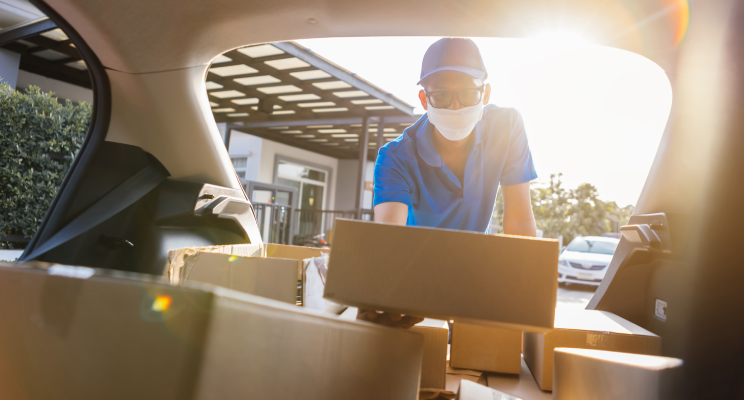A post-pandemic economy calls for companies in the Middle East to deliver last mile innovation.
The Middle East has seen a surge in the number of consumers turning to e-commerce. Driven by lockdown restrictions and the temporary closure of many businesses, the pandemic has forced consumers to turn to e-commerce, whilst at the same time fast-tracking the sector to bullish heights. This unexpected boom has impacted last-mile delivery, pushing startups to innovate and seek inspiration from the industry’s big players and last mile providers.
As cities across the MENA region went into lockdown in 2020, many brick-and-mortar businesses were forced to shut their doors and forfeit in-store revenues until their online delivery systems were active. The closure of many supermarkets and convenience stores influenced nascent consumers to turn to e-commerce. With this change in behaviour came a sudden surge in demand for business-to-consumer e-commerce solutions.
Despite a sudden growth, the outlook for e-commerce in the MENA region continues to look positive, and the sector has only continued to develop in 2021. Euromonitor’s data shows that the retail m-commerce (or mobile-commerce) market of UAE is projected to reach $3.9 billion by 2025, and grow with a CAGR of 18.9% until 2025.
The trend is mirrored in Saudi Arabia and data from the Saudi Central Bank has shown that the number of e-commerce transactions have risen 95% over the first quarter of 2021. It’s no surprise that both the UAE and Saudi Arabia have seen continued success. Combined, the two countries were responsible for an astonishing 75% of e-commerce sales in 2020. Although the sector growth seems impressive, a study from Go-Gulf revealed that e-commerce in the MENA region equates to only 2-3% of total retail sales. Compared to an uptake rate of 78% in US, uptake in the Middle East sits at a relatively low 48%.


The data show that there remains a huge potential for industry growth. Today, Middle Eastern consumers are some of the most connected in the world, spending over 8 hours a day online and boasting the highest smartphone penetration rate globally at 83%. Khalid Jamjoum, Global Director of Last Mile Operations at Aramex weighs up on the potential; “We continue to see growth in e-commerce built on the back of various verticals entering the industry.” He observes that one main driver of growth is the influx in SME operators and startups. Resilient by nature, they have entered the market at a time when a resourceful and adaptable attitude will only lead to better returns. Khalid also remarks how overall, the rapid uptake in e-commerce has given rise to innovation across the MENA region; “There’s been significant innovation, inventional processes and a focus on revolutionising the way deliveries are done.”
Innovation is without a doubt, a key component for success in the last mile space. Aramex as the region’s leading provider of logistics solutions, had been prioritising innovation in the years before the pandemic. In 2019 the company launched Aramex Fleet in 50 cities across five countries. The platform offers flexible opportunities for local nationals – giving them the means to deliver shipments in their free time whilst earning additional income. “Aramex Fleet has allowed us to really tackle the pandemic in a very lean, reactive approach,” Khalid says. The initiative provides the company with access to a valuable resource of readily available and willing drivers, at minimal cost to the company. Khalid details how Aramex has scaled up on the newly launched platform; “Aramex Fleet has reached a substantial contribution from Aramex’s total last mile operations.” In 2019, the company also launched Aramex Spot; a regional first for revolutionising the last mile experience. The model works by partnering up with retail outlets, or “spots” allowing customers to collect parcels at a location convenient to them. The addition of these tech-driven operations has streamlined Aramex’s entire operation regionally, solving the challenge of volume volatility that e-commerce brings to the table.
The future of last mile in the MENA region looks positive. With an advantage of a bullish market sentiment, and increased uptake following the pandemic, the potential remains huge for e-commerce in the Middle East. Companies looking to expand into e-commerce in 2021 should seek to deliver innovation and update their last mile practices. Startups and SMEs should continue to turn to the Middle East’s big players for inspiration, and look to take advantage of a sector that is set to scale.





One reply on “How Innovation is Shaping Last-Mile Delivery in the MENA Region”
Enjoyed examining this, very good stuff, appreciate it. “It requires more courage to suffer than to die.” by Napoleon Bonaparte.